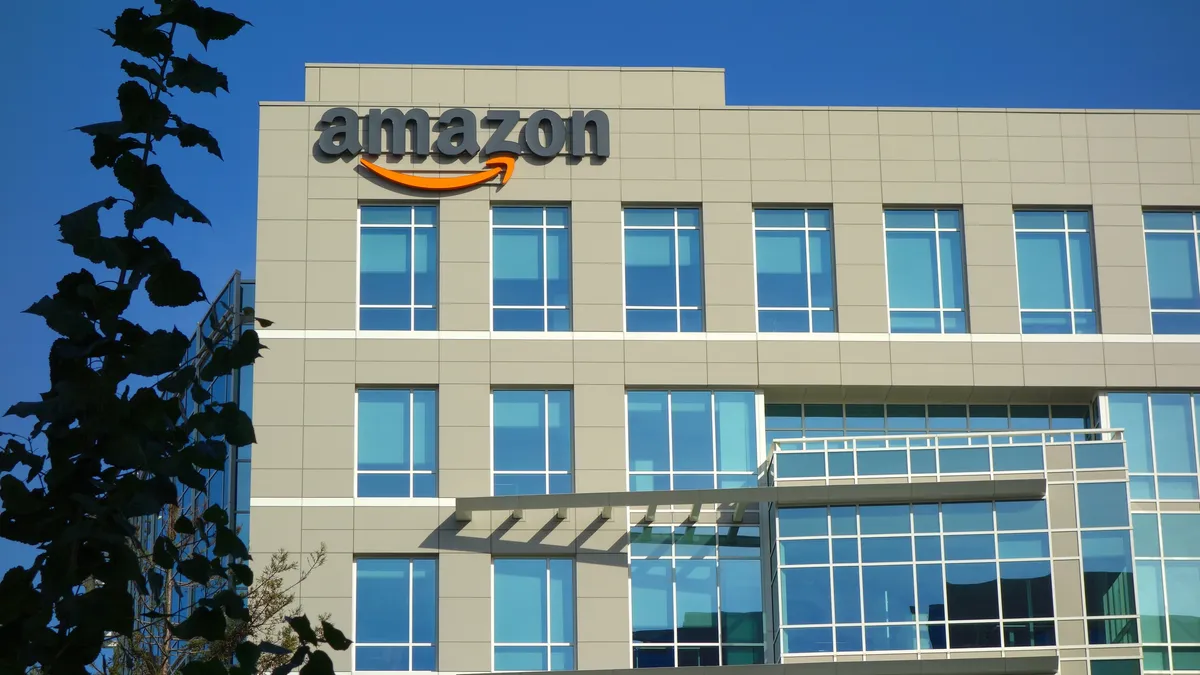Dive Brief:
-
Amazon has issued an invitation to one of its New York offices for customers to get their bodies scanned, an effort to develop an apparel-fitting service using a 3-D body scanning unit acquired through its purchase of body model startup Body Labs, the Wall Street Journal reports.
-
The e-commerce giant hopes that a series of scans over 20 weeks will foster understanding of how bodies change over time, according to the report. Participants in the 10 planned bimonthly visits will receive Amazon gift cards of up to $250, according to a copy of the survey memo reviewed by the Journal.
-
Meanwhile, Amazon's private labels are making headway in activewear, accounting for 57% of men's and 72% of women's best sellers in the first quarter, according to a new report from marketing analytics firm Gartner L2 that was emailed to Retail Dive. Since introducing activewear in December, Amazon Essentials has been one of the fastest-growing brands, as measured by Gartner L2 Amazon Performance Rank, rising from 16 to sixth in men's. In women's, five Amazon labels were among the top 10 brands in the fourth quarter, and by the first quarter that grew to eight.
Dive Insight:
Athleisure, especially disruptive to athletic sales, is moving sales of all apparel, and that remains true despite some signs of a slowdown. Consumers, especially the younger ones driving the trend, want to appear fit, even if they're really not, according to Matt Powell, vice president and senior industry analyst at The NPD Group.
"I think the idea here now is that this apparel is comfortable, it's versatile, I can wear it for many different occasions and if I do want to do physical activities I can wear it to that as well," Powell told Retail Dive earlier this year. "I don't know that we'll return to a time where we're wearing more formal clothing."
Fit isn't just all-important in activewear, however. It has also emerged as a key factor in apparel like denim and helped drive up sales at newer apparel sellers like Bonobos, which has long emphasized fit as a differentiator in its men's clothing. But it's notoriously difficult to ascertain fit when buying clothes online. That's leading e-commerce customers to order several iterations of apparel items, which has fueled returns and sucked out margins.
The value of retail returns last year rose 53% from 2015 to $400 billion, and the growth of e-commerce is stoking that, according to returns and overstock supply company B Stock. Returns of brick-and-mortar purchases tend to hover at 8%, while e-commerce returns can reach as high as 15% to 30%, according to CBRE, which says the likely value of online returns is $32 billion, up from 2016's estimated $28 billion.
More than 40% of retailers have seen an increase in such "intentional returns" in the past year, according to omnichannel retail management firm Brightpearl. That's exacerbating the already margin-crushing costs of fulfillment and delivery for orders that customers actually keep: 44% of retailers say margins are being strongly impacted by handling and packaging returns, with 70% saying they expect to be squeezed further as the practice intensifies.
And retailers don't have much wiggle room because getting tough on returns can backfire, costing them loyalty and sales. Helping customers get fit right using data gleaned from its body scan project could help Amazon mitigate that, but it's hard to know how well attempts at virtual fitting rooms or even such sophisticated scans can duplicate the age-old practice of trying things on.















